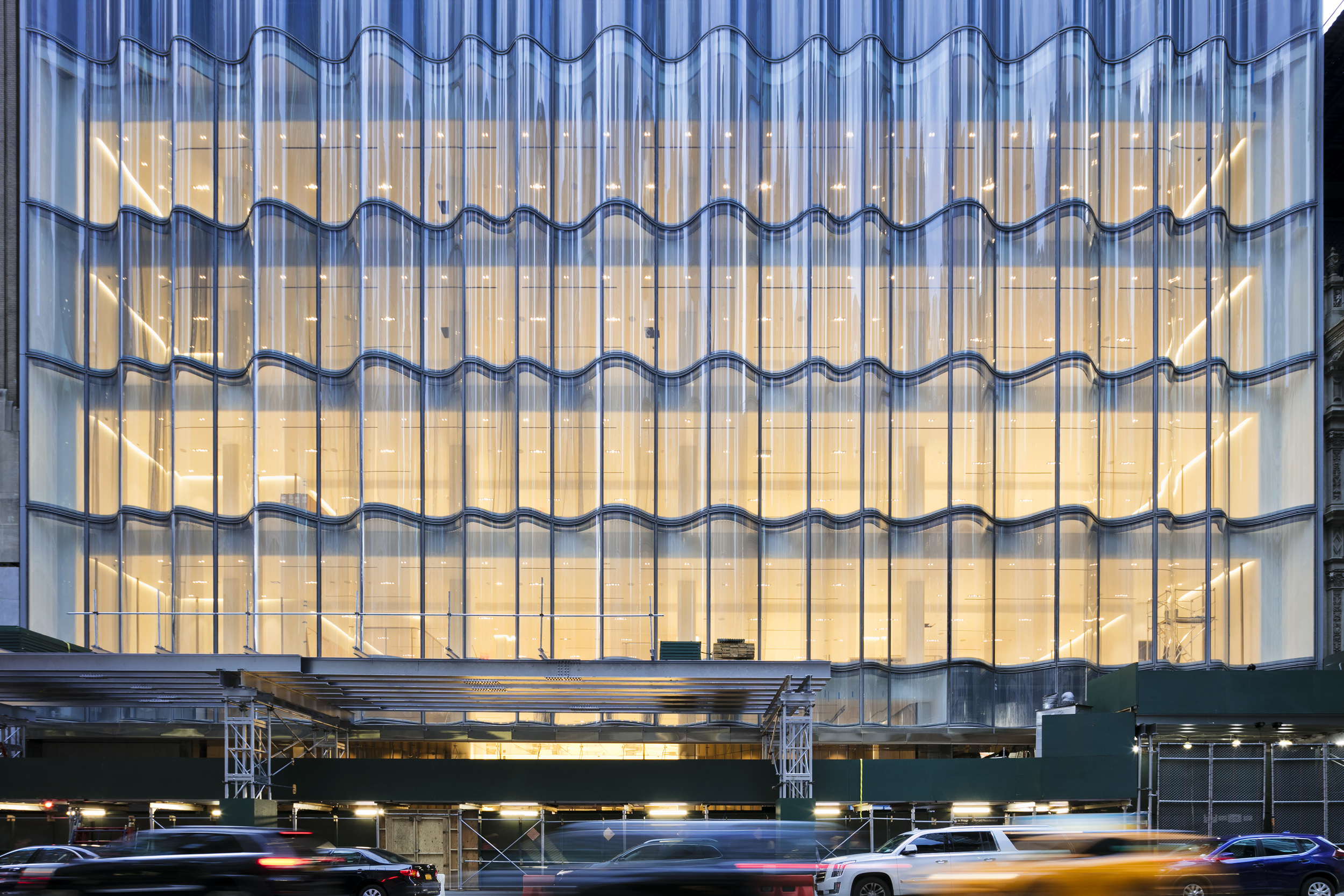When it comes to my relationship with department stores… “it’s complicated.” As a teen, I considered my local Neiman Marcus the epitome of taste and luxury. The place I picked up my first Kate Spade bag.
When I moved to Manhattan in my early twenties, I was enamored with Bloomingdales 59th St. The just-in-reach accessibility of upmarket brands! I attribute being hired for my first role in NY’s fashion industry to the aqua DVF pencil skirt I splurged on there. Thanks to Bloomies, I was a regular Rachel Green.
But the luster of these retail giants began to fade when I began to work as a vendor in one of NYC’s most celebrated flagship department stores. I learned the horrors of the loading dock, the ins-and-outs of the freight elevator death trap, and the secret of what emerges once shoppers depart for the evening (if you know, you know). My behind-the-scenes glimpse into department store operations took away their majesty and represented my transition from shopper to jaded industry insider.
In the years since, consumer loyalty for department stores has waned. Household name retailers like Macy’s are shuttering stores and consolidating operations. Shoppers are hip to the fact that they no longer have to pay full price for high quality goods. Department stores may have created a monster with off-price sister brands, ala Saks Off Fifth, Nordstrom Rack, and Neiman Marcus Last Call. Meanwhile, shoppers are drawn to experiential retail and smaller format stores.
This is all to say that I arrived at the new Nordstrom NYC flagship with some healthy skepticism. Could the seven-level, 320,000 sq. ft store actually rise to meet the needs of today’s shopper? Well, here are 5 department store firsts—maybe even retail firsts—I experienced, to my surprise, while there. And why I’ll probably go back.
At Your Service
I can’t speak for the rest of the Nordstrom-verse, but the associates at the Nordstrom NYC flagship were, for lack of better words, an absolute joy. They smiled at me in passing—5 points. They appeared (mostly) busy—5 points. They seemed to enjoy one another’s company, but not at the expense of shoppers—10 points.
But by service, I’m referring to a lot more than associate training and morale. The place literally offers so many additional services—and in a way that’s much more accessible than your typical department stores.
On the bottom floor, there’s an “Express Services” department that features a tailor who can complete the job that day, click-and-collect pick-up, a station to charge your phone, and clothing donation. Nearby, get your shoes and handbags repaired and restored.
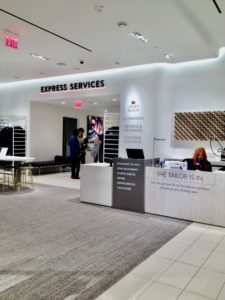
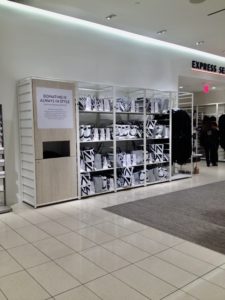
Rather than making you work for these services by trying on clothes and interfacing with a sales associate, Nordstrom puts their services on a platter, whether you’re shopping with them or not. If you do wind up in a fitting room, simply press a button on a screen to request a tailor at your beck and call. Those who are lucky enough to live nearby (I’ve long left Manhattan for Brooklyn’s ample hills), have a veritable hub to check annoying tasks off their to-do list.
Let There Be (Natural) Light
Department stores are typically windowless. Whether it’s to maximize the floor and stock rooms, to control lighting for optimal visual merchandising, or to leave shoppers blissfully ignorant of what time it is, artificial lighting is the norm.
Well, Nordstrom just said “no” to this outdated retail convention, leaving an entire facade of the building to floor-to-ceiling windows.
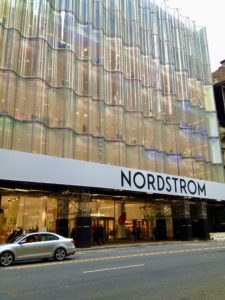
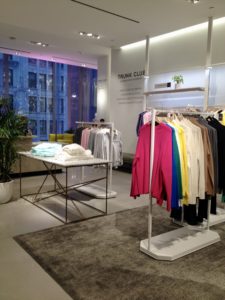
To an onlooker from the street, the undulating windows look like a futuristic spaceship or glowing hearth. From the inside, the lighting remains controlled and the city serves as a perfect backdrop to the clothes contained.
Obsession with Experience
Unless you’re hawking household staples or offering solid products at bargain bin prices, it’s no longer enough to just sell products. The experience economy is calling, and—for today’s consumers—the jig is up: status is no longer determined by how many products you accumulate. Millennials and Gen-Z are gravitating toward tiny apartments in cities and staying there. And apartments aren’t all that well suited for mounds of stuff, hence the explosion of Marie Kondo and the boom of resale and rental economies.
Department stores are evolving in order to survive. And Nordstrom is using their NYC store’s beauty haven to flex their newfound experiential muscles.
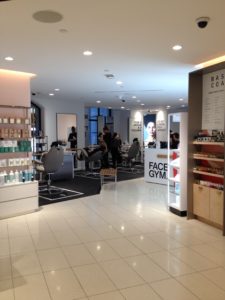
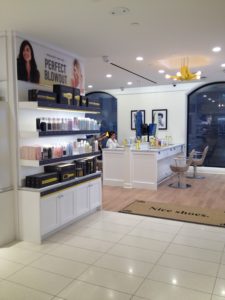
Visitors are treated to an unparalleled menu of specialty salon services including injectables with Kate Somerville (a first for department stores), brow perfection with Anastasia Beverly Hills, light therapy with The Light Salon, and much, much more. Lending floor space to vendors who are specialists in their own beauty turf means customers can expect a level of expertise that might not be present in your average retail beauty bar.
Sure, beauty is an area of the business best primed for experiential retail. But, there’s a keen attention to detail in other departments that help elevate the overall experience. Take the men’s store, for example:
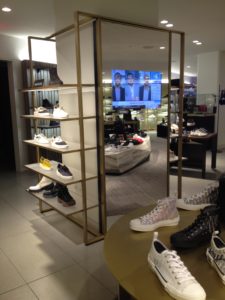

Unobstrusive screens broadcasting ESPN and thoughtful modern art displays promote the space as a place marked by refined taste that you’d aspire to spend more time in… not somewhere you have to suffer until you’re allowed to go home.
Reality, but Make it Augmented
Goldman Sachs finds that the market for virtual reality (VR) and augmented reality (AR) in retail will reach $1.6M by 2025. The potential benefits of using such technology include improving customer engagement and satisfaction, providing a personalized experience, enabling new marketing methods, and facilitating employee training, according to Forbes. Well, the Nordstrom NYC flagship is officially bought-in and offers visitors several opportunities for shoppers to play with (AR).
I enjoyed trying on different lipstick colorways without making a mess of my face or exposing myself to the saliva of others.
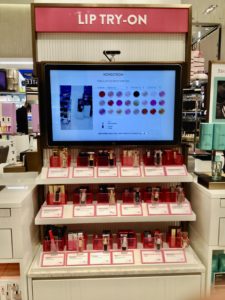
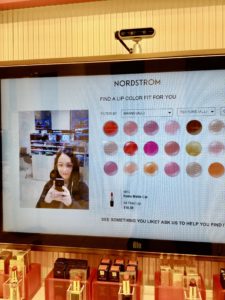
While it doesn’t constitute AR explicitly, I also enjoyed interacting with the Fragrance Finder, which helps shoppers discover and experience their new favorite scent with an interactive quiz. Other highlights included a Skincare Finder and a Beauty Stylist Virtual Mirror.
Brands Galore
If you’ve been long been a shopper at Nordstrom, you’re used to seeing their in-house brands time and time again. BP, Halogen, and The Rail are amongst the 25 brands that typically occupy prime floor space at Nordstrom, in addition to staple vendors like Free People, Madewell, and Tory Burch.
But the Nordstrom NYC flagship turns that on its head.
Here you’ll find prime floor space dedicated to emergent and direct-to-consumer that you’re unlikely to find in other stores, let alone other department stores. One feels the joy of a treasure hunt while perusing Nordstrom’s seven floors, and even a sense that you’re being given a golden ticket to something you wouldn’t otherwise get.
Here, for instance, I found up-and-coming digital native, Summersalt, just behind swimwear mainstay, L*Space.
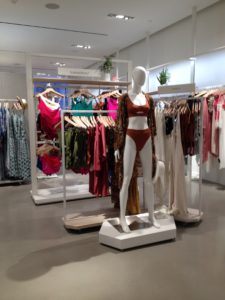
I’ve been seeing compelling ads for Summersalt for some time now. Nonetheless, I stopped short of purchase due to:
- Lack of Trust: How do I know this is a quality upstart DTC vs. a slick-looking, Shopify-powered mirage?
- Concerns About Quality: Can I even trust these reviews? How do I know craftsmanship and fabrication is on point?
- Question of Fit: I know what size I am in established brands, but do I really want to deal with the exchange process if I get it wrong here?
Having the product right there in-store kicks my objections to the curb. And the brand’s mere association with Nordstrom assuages any trust or quality concerns. I can easily address fit concerns in five minutes or less with a trip to the fitting room.
The availability of lesser-known, niche products isn’t limited to a single department (ala Macy’s Story, for instance). It’s an ethos that permeates the entire Nordstrom NYC flagship, and Nordstrom deserves to be lauded for giving prominent floorspace to less established players.
The Verdict: Will I return to the Nordstrom NYC Flagship?
Probably yes.
Nordstrom could easily be my go-to place to shop for something specific—a dress, a bag, a pair of shoes. And I expect it will be just that for those who live or work nearby and have some time to burn.
At the same time, convenience is everything to me these days. Without half an afternoon to spare here and there, and an hour-long commute to boot, I’ll be lucky if I make it in again.
I will always look to it longingly, at the very least. And perhaps, it will even make me more fondly reflect on my past life as a department store diehard.
CB4 ensures that the products shoppers want are always in stock and ready to shop. Check out how we empower store managers with quick, AI-powered recommendations to supercharge the in-store experience and unlock lost sales.
